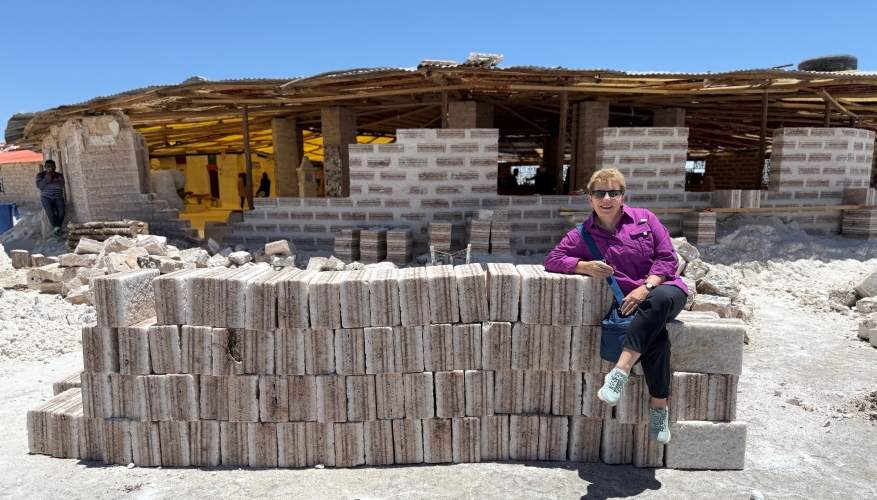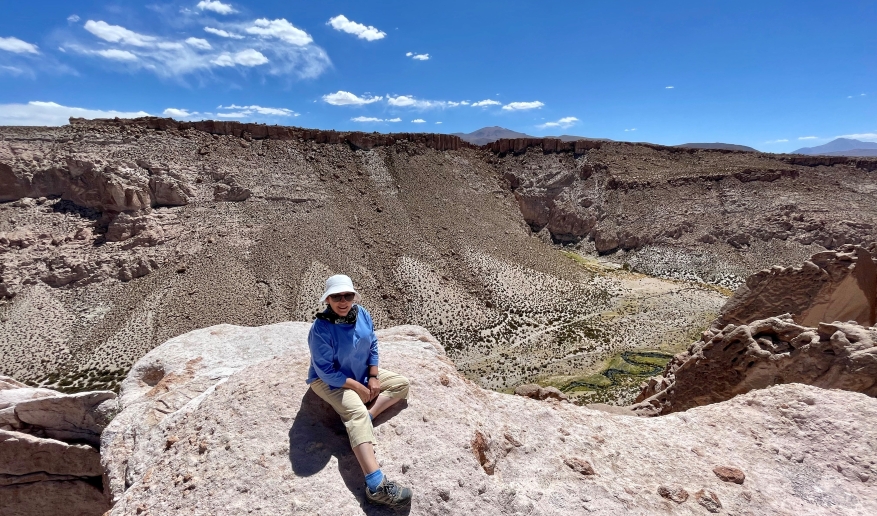Recently, I travelled to South America for the fourth time. South America is made up of twelve countries and it is impossible to explore them all in just one trip. Countries like Brazil are larger than Australia and Chile is one of the longest countries in the world. Travellers often return to Europe time and time again, enjoying different countries with each trip, and I feel travellers should do the same for South America – a continent of great diversity and with many intriguing destinations.
This trip was limited to the arid regions of Bolivia and the Atacama Desert in Chile. Australians reading this may think they don’t need to travel to South America to experience deserts as we have them at home in Australia but I can assure you they are quite different.
We flew Latam on their direct flight from Sydney across the Pacific – a relatively short flight; 12 hours 30 minutes and you are in South America. This is considerably shorter than going to Europe. Twelve hours flying time usually only gets you to Doha or Dubai from Australia and, if you are on the way to Europe, you still have another lengthy flight to go. Latam fly daily from Sydney on the modern BOEING 787-9 Dreamliners four times a week from Melbourne and have an extensive network of flights all over South America.
Due to flight connections, we had a one-night stay at the The Singular Santiago, Lastarria Hotel – this boutique hotel is well located right next to Santiago’s food street and within walking distance of the shops. We have high praise for their comfortable, stylish rooms and the hotel's staff were outstanding. Nothing was too much trouble. The rooftop bar with its pool and view of the nearby snow-capped Andes mountains are both standout amenities at this hotel.
We next visited La Paz – the highest capital city in the world perched 3,500m above sea level and set amongst rocky mountain peaks in Bolivia. The landscape resembles a place where you would expect to find ‘Fred Flintstone’ built on the Andes’ Altiplano plateau at more than 3,500m above sea level. Altitude sickness is something most travellers will need to adjust to, and I definitely recommend a recovery day on arrival. To us the altitude just meant walking slowly, but many experience more extreme symptoms so a buffer day to adjust is a good idea.
Public transport in La Paz is actually an aerial cable transport system called ‘teleferico’ which is low priced and easy to use. It extends 33 km, 11 lines and 30 stations all over La Paz allowing you to glide over the city getting a bird’s eye view. Things to visit include mainly stately buildings, plazas and decorated churches, the Witches Market and the colonial streets. Valley of the Moon (Valle de la Luna, also called Killa Qhichwa) is also worth visiting to see its sharp sandstone peaks eroded by the elements, glittering salt deposits and crater-like depressions. Located just outside the city, this travel gem is easy to include in your city sightseeing.
From La Paz we flew to Uyuni: home of the largest Salt Lake in the world - over 10,000 sq km in size. White and flat as far as the eye could see. Depending on the season Uyuni is either dry with a stark landscape of salt hexagons or wet allowing for photos with mirror effects. Both options allow the visitor to play with perspective and take unique photographs.
During our day at Uyuni we also visited Incahuasi Island inside the lake, featuring giant cacti and having a significance to the local indigenous people. There are no major cities near the salt flats so you will need to spend at least one night in this area. We stayed in a hotel made entirely of salt. Salt bricks are used for local housing in the region. You can also purchase salt as a useful souvenir.

We travelled overland from the Uyuni salt flat to the Chilean border on an organised 3 day/2night mini tour with driver and guide though a region which is rich in unique ecological features, including volcanoes, thermal pools, colourful lakes (some red, another green and even a white one), and incredible wildlife. We saw flocks of flamingos, domesticated llamas and a native rabbit (viscacha) which has a tail like a fox and very long ears. The landscapes we travelled through were constantly changing and extremely remote and beautiful. We stopped at canyons, lookouts and local townships along the route. Roads we often just dirt tracks made by mining companies working in this region.
After crossing the border into Chile, we stayed at 2 lodges with access to the Atacama Desert, known to be the driest place on earth. Some of our hikes and excursions did take us to very arid spots however, surprisingly, the Atacama Desert contained a lot of water in the form of hot springs, geysers, more salt lakes and many high plateau lakes and lagoons fed by melting snow. These oases in the desert are often quite spectacular as seen at Miscanti and Meñiques lakes where the deep blue waters of the lakes contrast with the nearby volcanoes. We walked in the Painted desert, spotted vicuña and guanaco (both relatives to the llama), swam in Puritama Hot Springs and enjoyed seeing the geothermal areas and volcanic scenery.
Our accommodation at both Explora Atacama Lodge and Nayara Alto Atacama Lodge offered a fully inclusive program of activities. Hiking, walking, rock climbing, horse-riding, mountain bike riding, star gazing evenings and chauffeur driven excursions are all included in your accommodation rate along with all meals, drinks and use of the lodges facilities. It may appear challenging to decide what to do but an explorer consultant sits down with you on arrival, makes recommendations and plans out your days depending on your ability, wish list and time available. You can do as little or as much as you like. Each trip is accompanied by a guide and driver. These are either small group or private and the escorts not only provide details and knowledge, but also refreshments or, in the case of a full day trip, a 3-course lunch in the middle of nowhere with a great view and lots of creature comforts. Most of the international guests staying at the lodges made the most of their time spending their days doing activities rather than lying by the pool but this was also an option.
Both lodges are close to the township of San Pedro de Atacama which was worth visiting. The closest airport is Calama – about one hours’ drive away.
I would totally recommend these places as a worthwhile addition to any South American holiday. Being remote means you often feel like you are the only person there and sometimes it is nice to escape the masses when on holidays.
Speak to Kymberly from our office with regards to your South American Adventure.
